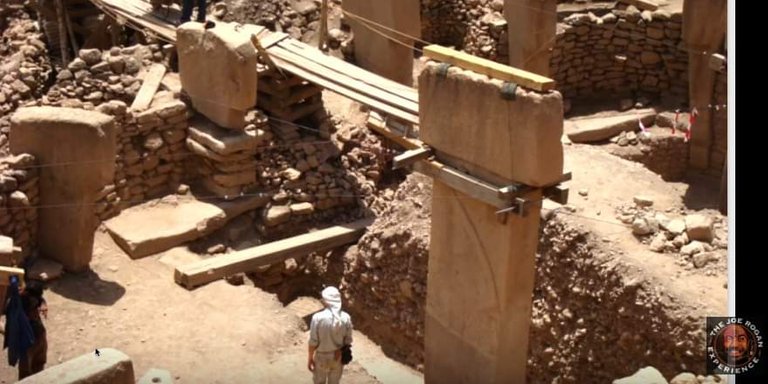An alternative solution... considering "lazy" Pyramid building techniques (efficiency). To the minds eye, the image of humans pulling large stones across the desert seems illogical. If I were building using such techniques I would have to resign in shame.
Previous development:
A mathematical exploration... Defining a Vortex, One Axial One Angular Enumeration
https://steemit.com/physics/@deanpiecka/defining-a-vortex-one-axial-one-angular-enumeration
The Pyramid in the Vortex
https://steemit.com/physics/@deanpiecka/the-pyramid-in-the-vortex
Of the most illogical actions one can perform on Earth, pulling stones about might be the prime example.
If one has a desert full of little rocks along with water and limestone...
No water, no new pyramids?
Even with the technology of cement there are limitations to how many tons can be mixed at once ..Baalbek?
One possible forming method might use a square hole or four wooden sides can be supported by sand mounded around the form.
The photos of persons standing beside pyramid blocks suggest the form would have been shoulder height, a decent and logical configuration for humans to work with.
Notice that many of the ancient structures who's stonework seems beyond modern capability, their stones have a very uniform composition compared to natural rock formation which usually contains more inconsistency.
The blocks might have been kept shoulder height to keep the workers from fleeing the site, needing to climb out of concrete deeper than oneself ..a dreadful thought.
Pyramid Builder's Union "We demand that forming be less than the height of a labourer, no longer shall labour disputes be silenced by the work itself".
If nothing else, there exists an alternate reality where the pyramids and monoliths were constructed using limestone (cement).
Which is worse? ..cement dust or pulling whole stones, which will cost more labourers their life?
Hmm, the stone is even the same colour as the sand underneath it.
The "sandcastles" of Egypt.
Exercise: One striking tool with a chisel are to be applied to making a simple cut across one stone piece and one cemented. Record the difference in time to completion. Depending on the type of stone, the operation requested may not be possible nor reasonable to expect of a human and tools.
In Canada the receding glaciers have left a very wet and soft soil, therefore american natives elected not to build Pyramids in North America ;) . The Eagle and the Beaver have yet to be informed by the Pyramids that global warming is not a new phenomenon to panic about. The changing climate is a concern though some have allowed themselves to be carried away.
For each block that has a mass of approximately 2 - 2.5 tons, how many tons must the piece have weighed BEFORE it was shaped square? ..if we accept the reality where stone was employed.
Credit is due to Robert Schoch for recognizing vertical water induced weathering of stone surrounding the Sphinx.
What if the Sphinx was a desert pool? ..that may have provided the water for the workers and labour. It may have been a diversion of the high-waters at that time or it could have been a water-table well. A diversion of river waters would provide sufficient weathering. A one thousand-year-old well might have weathering.
There are rivers in the world that flow both ways with the tide, nature's hydraulic pump. On the East coast of North America the technique was used to irrigate crops, it still is. The water rises yet there are zones of salinity and those without that provide coastal marine ecologies.
Yes, we may also provide scientific confirmation for that soon... that earthquakes and lava-flows give the impression they might be the early iterations of solar flares.

For a civilization adorned with gold, a standard shovel of the time must have existed within their metal smithing capabilities. A hardened chisel of some composition would have been an essential tool. Metal hardening was not recorded till much later, that does not rule out that metalwork of the Ancient Egyptians benefited from hardening techniques. Short of metals one can employ rocks that are harder than other rocks, a whole field study and application (bigger rocks from the small).
After all of these years, no one thought that it would be more logical to cement these types of shapes rather than risk days and months of work to ONE stress such as a misplaced tool strike, gone. The pillars are relatively thin with ornate relief though thick enough to complement limestone-based (cement) construction. It seems more likely they would break being tooled at intensely enough to produce the shape and graphic. The holes in stone, could be a "footprint" appended during the setting of the ancient faux-stone mixture.

Modern concrete will most often contain large aggregate to "cheapen" the mix, in some cases the mixture is desired for it's specific properties. These ancient faux-stones, their composition would be mostly sand rather than large aggregate. I am noticing many of these ancient sites share similarly textured stone. Might they be sand aggregate and limestone?
I find discrepancies and follow them to a solution, the excitement of working toward a solution based on observed discrepancy can sometimes carry away the individual who sought to repair rather than divide.
Postulating a solution often feels like an insult to existing works if not tactfully composed. The novelty of a discrepancy eventually passes and accumulating facts take the place of shock and worry.
Okay, now it is really beginning to bother me those stones have a mostly uniform colour and texture. Not perfectly uniform though too much so for stone I have climbed and known.